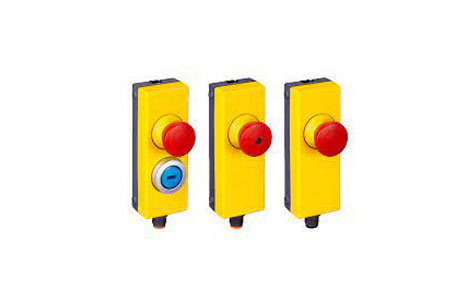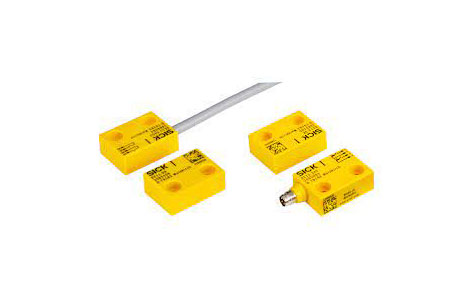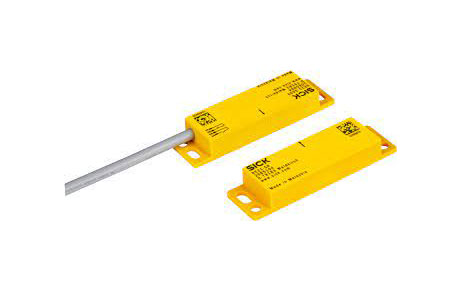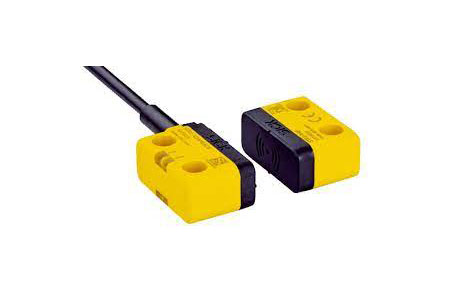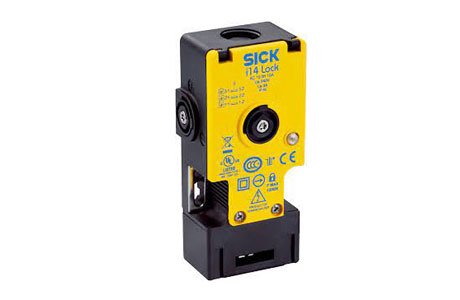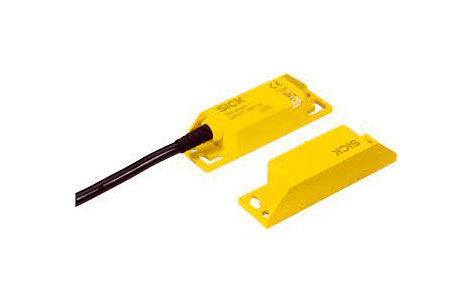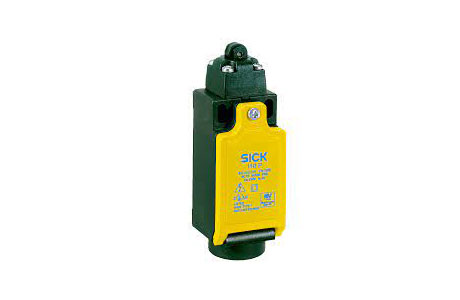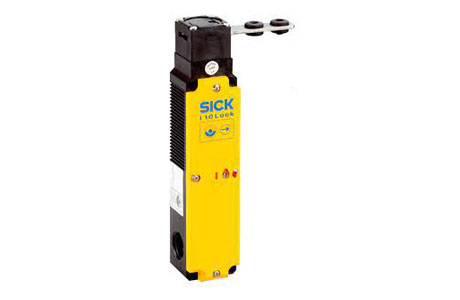Sick Safety Switch: Magnetic & Non Contact Switches
Are you searching for Sick Safety Switch? then you are in the right place IndMALL offers a range of sick magnetic safety switches and is divided into electro-mechanical and non-contact safety switches, safety locking devices, and safety command devices.. We can assure you our prices are better than Authorized Sick non contact safety switch Dealers or Sick safety door switch distributors in Chennai, Coimbatore, Mumbai, Pune, Mumbai, Bangalore, Pondicherry, Hyderabad, and Pan India.
Sick Safety Switch: ES11 Series
- Design: Slim plastic housing with quick disconnect clip.
- Functionality: Emergency stop pushbutton, optional combined emergency stop/reset unit.
- Illumination: Optional LED for emergency stop, illuminated reset push button.
- Connectivity: Flexi Loop-compatible M12 connector.
- Installation: Easy mounting, quick commissioning, and replacement.
- User Interface: User-friendly status display.
Sick Magnetic Safety Switch: RE1 Series
- Response Range: Up to 7 mm.
- Contacts: 2 or 3 contact options.
- Performance Level: Up to PL e (EN ISO 13849).
- Connection Types: Plug connector or connected cable.
- Flexi Loop Compatibility: Available in some variants.
- Design: Durable, low-maintenance, compact housing.
- Applications: Ideal for door monitoring in contaminated or hygiene-sensitive areas.
Sick Magnetic Switch: RE2 Series
- Response Range: Up to 9 mm.
- Contacts: 2 or 3 contact options.
- Performance Level: Up to PL e / Cat. 4 (EN ISO 13849).
- Connection: Options for plug connector or connected cable.
- LED Indicator: Available for diagnostics (RE27 model).
- Flexi Loop Compatibility: In select variants.
- Advantages: Durable, low-maintenance, high tolerance for door misalignment, easy to clean.
Sick Non Contact Safety Switch: STR1 Series
- Response Range: Up to 14 mm.
- Mounting: Flexible, with small housing.
- Activation: From three sides.
- Actuators: Four different sizes.
- Coding Options: Universal, unique, and permanently coded.
Sick Lock Safety Switch: I14 Series
- Type: Type 2, electro-mechanical (EN ISO 14119).
- Actuator Coding Level: Low coding level (EN ISO 14119).
- Output Type: Electro-mechanical contacts.
- Locking Principle: Power to release.
- Locking Monitoring: Yes; Locking Force: 770 N (EN ISO 14119).
- Connection Type: Cable gland, 1 x M20; Series Connection: Up to 30 sensors.
- Advantages: High manipulation protection, shock/vibration resistance, economical series connection, LED status indicator.
Sick TR4 Direct Safety Switch
- Response Range: Up to 25 mm.
- Coding: Unique and universally-coded sensors.
- Safety Outputs: Two OSSD safety outputs.
- Series Connection: Reliable series connection of up to 30 sensors.
- LED Indicator: For fast diagnosis.
- Flexi Loop Compatibility: Certain variants feature Flexi Loop-compatible M12 plug connectors.
- Enclosure Rating: Up to IP 69K.
Sick Interlock Switch: I10 Series
- Type: Type 2, electro-mechanical (EN ISO 14119).
- Actuator Coding Level: Low coding level (EN ISO 14119).
- Output Type: Electro-mechanical contacts.
- Locking Principle: Options for power to lock or power to release.
- Locking Monitoring: Yes; Door Monitoring: Yes.
- Locking Force: 1,000 N (EN ISO 14119).
- Connection Type: Options for cable gland (3 x M20) or M12 plug connector.
- Housing: Narrow plastic housing, IP67 enclosure rating.
Sick Safety Interlock Switch: TR10 Series
- Type: Type 4, RFID (EN ISO 14119).
- Coding Level: Low and high coding options.
- Output: Self-monitoring semiconductor outputs (OSSDs).
- Locking Principle: Power to release or lock.
- Locking Force: 1,300 N; Diagnostics: LED status indicator.
- Design: Slim, rugged, suitable for contaminated environments.
- Power Efficiency: Bistable solenoid coil for low power use.
Product List:
| Model No | Image | Sensor principle | Type of output | Connection type | Supply voltage |
|---|---|---|---|---|---|
| RE21-SAC | 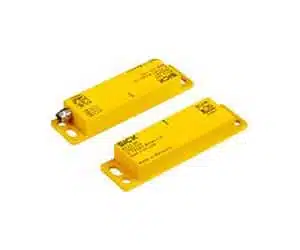 |
Magnetic | Reed contacts | Plug connector, M8, 4-pin | ≤ 30 V DC |
| STR1-SAFM0AC5 | 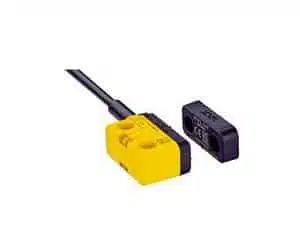 |
RFID | Self-monitoring semiconductor | Cable with plug M12, 5-pin | 24 V DC (19.2 V DC … 28.8 V DC) |
| TR4-SAM01CB | 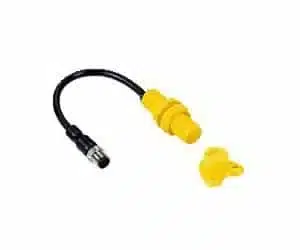 |
RFID | Self-monitoring semiconductor | Cable with plug M12, 8-pin | 24 V DC (20.4 V DC … 26.4 V DC) |
| RE13-SAC | 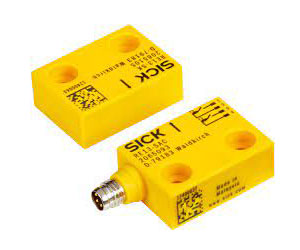 |
Magnetic | Reed contacts | Plug connector, M8, 4-pin | ≤ 30 V DC |
Frequently Asked Questions
What is a Safety Switch Used for?
A safety switch is used to quickly disconnect power in industrial machines, ensuring worker safety. It prevents accidental start-ups during maintenance and stops machinery in emergencies.
Safety switches are essential for complying with workplace safety regulations, protecting both personnel and equipment from potential hazards associated with unexpected power surges or operational malfunctions.
Where is the Safety Switch?
The safety switch is typically located near the machinery or electrical equipment it’s designed to protect. It’s easily accessible for quick operation in emergencies.
In homes, safety switches are often found in the electrical service panel. In industrial settings, they’re usually mounted on or near machines for immediate operator access.
Do I need a Safety Switch?
Yes, a safety switch is essential for both home and industrial settings. In homes, it protects against electrical hazards, preventing shocks and fires.
In industrial environments, it ensures machinery safety, protecting workers from accidents. Safety switches are crucial for compliance with safety regulations and maintaining a secure operational environment.
What is the Difference Between a Safety Switch and a Breaker?
The difference between a safety switch and a breaker lies in their functions. A safety switch, also known as a residual current device (RCD), protects against electric shock by detecting current imbalances.
A circuit breaker, on the other hand, protects electrical circuits from damage caused by overcurrent or short circuits by interrupting the flow of electricity.
Choose IndMALL for Sick Safety Switch and connect with us today.

